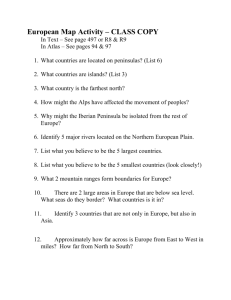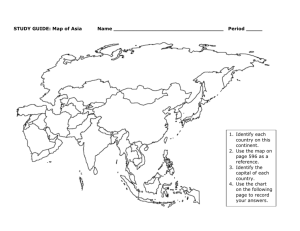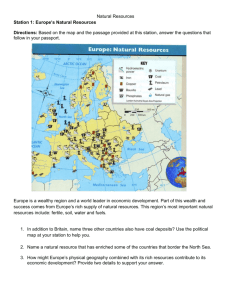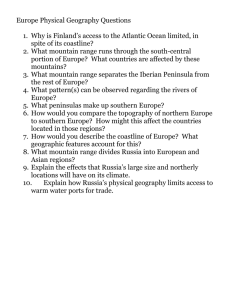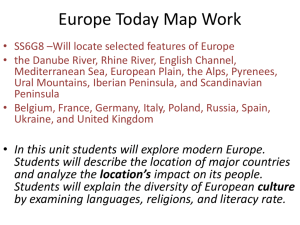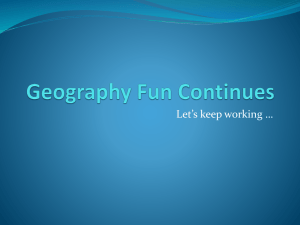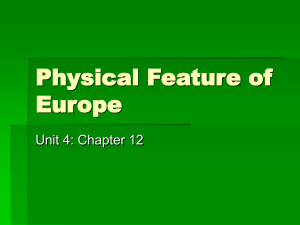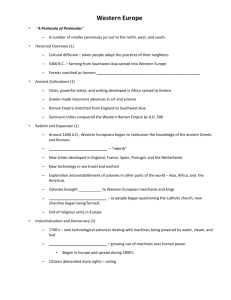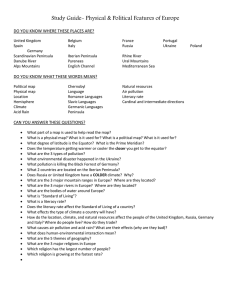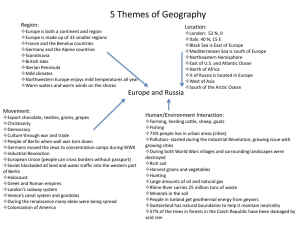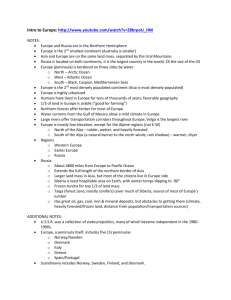Europe Geography Notes
advertisement
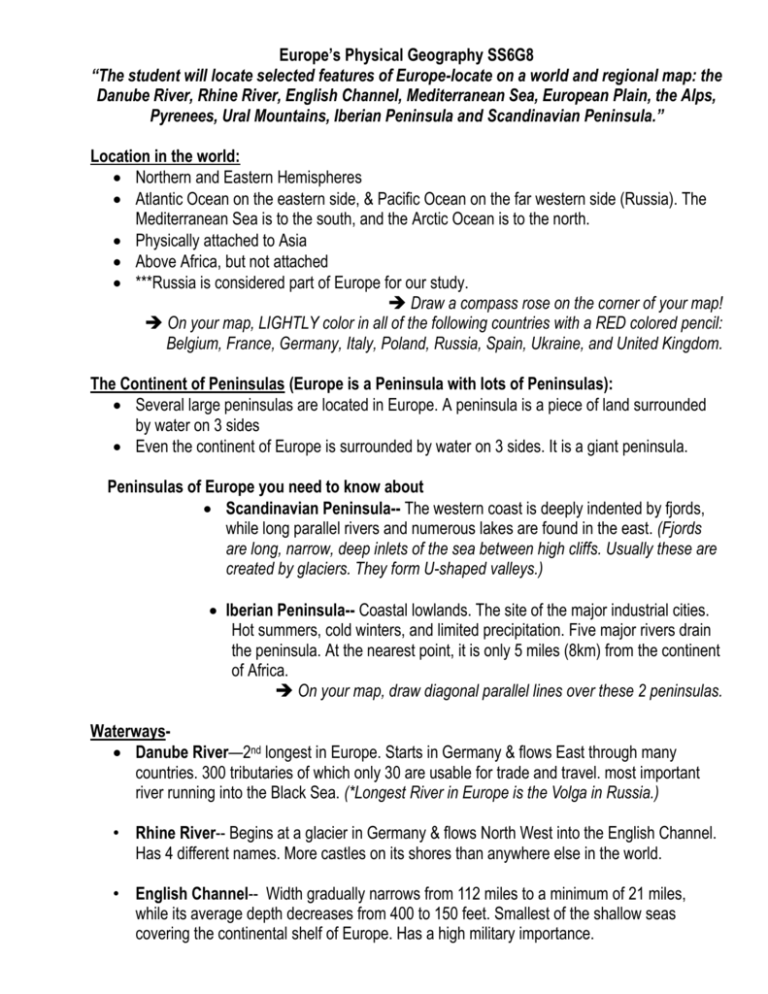
Europe’s Physical Geography SS6G8 “The student will locate selected features of Europe-locate on a world and regional map: the Danube River, Rhine River, English Channel, Mediterranean Sea, European Plain, the Alps, Pyrenees, Ural Mountains, Iberian Peninsula and Scandinavian Peninsula.” Location in the world: Northern and Eastern Hemispheres Atlantic Ocean on the eastern side, & Pacific Ocean on the far western side (Russia). The Mediterranean Sea is to the south, and the Arctic Ocean is to the north. Physically attached to Asia Above Africa, but not attached ***Russia is considered part of Europe for our study. Draw a compass rose on the corner of your map! On your map, LIGHTLY color in all of the following countries with a RED colored pencil: Belgium, France, Germany, Italy, Poland, Russia, Spain, Ukraine, and United Kingdom. The Continent of Peninsulas (Europe is a Peninsula with lots of Peninsulas): Several large peninsulas are located in Europe. A peninsula is a piece of land surrounded by water on 3 sides Even the continent of Europe is surrounded by water on 3 sides. It is a giant peninsula. Peninsulas of Europe you need to know about Scandinavian Peninsula-- The western coast is deeply indented by fjords, while long parallel rivers and numerous lakes are found in the east. (Fjords are long, narrow, deep inlets of the sea between high cliffs. Usually these are created by glaciers. They form U-shaped valleys.) Iberian Peninsula-- Coastal lowlands. The site of the major industrial cities. Hot summers, cold winters, and limited precipitation. Five major rivers drain the peninsula. At the nearest point, it is only 5 miles (8km) from the continent of Africa. On your map, draw diagonal parallel lines over these 2 peninsulas. Waterways Danube River—2nd longest in Europe. Starts in Germany & flows East through many countries. 300 tributaries of which only 30 are usable for trade and travel. most important river running into the Black Sea. (*Longest River in Europe is the Volga in Russia.) • Rhine River-- Begins at a glacier in Germany & flows North West into the English Channel. Has 4 different names. More castles on its shores than anywhere else in the world. • English Channel-- Width gradually narrows from 112 miles to a minimum of 21 miles, while its average depth decreases from 400 to 150 feet. Smallest of the shallow seas covering the continental shelf of Europe. Has a high military importance. • Mediterranean Sea-- almost completely enclosed by land: on the north by Europe, on the south by Africa, and on the east by Asia. Tourist Attraction. Has had many shipwrecks! On your map, Draw in these rivers using a BLUE marker or colored pencil & Label them. Then, Label these other water ways. Mountains Alps-- stretch across much of the continent of Europe. The largest mountains in Europe. Located just above the country of Italy. Tourism is a big industry here. Pyrenees-- Pyrenees border the Iberian Peninsula. They are in France and Spain. They completely engulf the tiny nation of Andorra. They create an important geographical barrier. Ural Mountains-- system of mountains which extends from the Arctic Ocean southwards nearly to the Caspian Sea. Important as security throughout history. They seperate Europe from Asia. On your map, Draw in these mountain ranges with triangle peaks in BROWN pencil or marker. Then, label them. European Plain— primarily a rolling plain with an average elevation of about 180 m (about 590 ft). Agriculture! The west has a maritime climate very favorable to agriculture. It has enough rain in all seasons to keep fields green. Summers are warm but not hot, and winters are cold but not freezing. On your map, take a GREEN colored pencil or marker and outline or shade in this area. Then, label it. Black Forest- European folk or fairy tales often take place in a deep, dark forest. They were a major part of the European landscape centuries ago. Most famous collection of folk tales in our life was that of Brothers Grimm.
